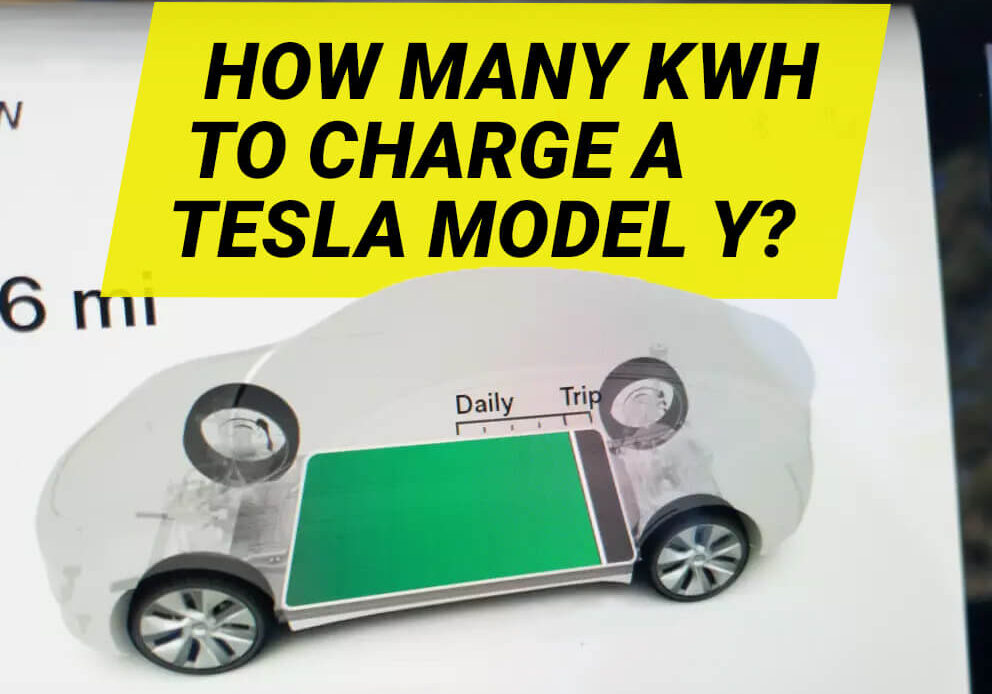How Many kWh Does it Take to Charge a Tesla Model Y?
Answer: The Tesla Model Y has a Battery pack capacity of 75 kWh, and has an estimated driving range of 300 miles.
Updated: September 25, 2023 // Questions

We live in a world that is rapidly shifting toward sustainable energy, and electric vehicles, like the Tesla Model Y, are leading the charge. But one question that lingers in the minds of potential buyers and EV enthusiasts alike is, “How many kWh does it take to charge a Tesla Model Y?” Let’s take a closer look.
Related: Tesla & BMW Partnership Coming? What We Know So Far
Understanding the Battery Capacity of Tesla Model Y
The Tesla Model Y, one of the leading models in Tesla’s current lineup, comes with a battery capacity of approximately 75 kWh. However, the energy use of an electric vehicle depends on many factors including driving conditions, weather, and even the driver’s habits.
Tesla Model Y: Battery & Charging Table | |
|---|---|
| Range EPA | 300 miles (483 km) |
| Range NEDC | 326 miles (525 km) |
| Range WLTP | 336 miles (540 km) |
| Battery pack capacity | 75 kWh |
| Max charging power (AC) | 11.5 kW |
| Max charging power (DC) | 250 kW |
Calculating the Energy Required to Charge a Tesla Model Y
To estimate the number of kWh needed to charge your Tesla Model Y, let’s consider a scenario. Suppose your Model Y has been completely drained and you’re about to plug it into a Tesla Supercharger. A Supercharger can charge your Model Y at a rate of 250 kW (under ideal conditions), meaning it can take your battery from 0 to 100% in around 30 minutes. Thus, a full charge from 0% to 100% would take approximately 75 kWh.
Related: How Do You Lock a Tesla Model 3?
Understanding the Cost Implications
While the cost to charge a Tesla Model Y will vary based on the electricity rates in your region, let’s consider an average electricity rate of $0.13 per kWh. In this case, a full charge from 0% to 100% using 75 kWh would cost about $9.75.
It’s worth noting that charging at home using a 240V outlet, also known as Level 2 charging, can be more cost-effective than Supercharging, but it will take longer to fully charge your Model Y.
Reduce Your Tesla Model Y’s Charging Needs
While it’s important to know how many kWh it takes to charge your Tesla Model Y, it’s equally important to understand how to maximize your vehicle’s efficiency. Adopting efficient driving habits, such as gradual acceleration and deceleration, can significantly reduce your Model Y’s energy consumption.
Also, Tesla’s regenerative braking feature recovers energy that would otherwise be lost during braking and feeds it back into the battery. Making the most of this feature can improve your vehicle’s range, reducing the number of times you need to charge it and, ultimately, the number of kWh consumed.
Related: New Features Confirmed: The Cybertruck Is Here To Electrify The Pickup World
The Future of Tesla and EV Charging: V3 Supercharging & Beyond
Tesla is continually innovating in the charging space with the introduction of V3 Supercharging, which provides peak rates of up to 250 kW per car. This development makes charging faster and more efficient than ever, significantly reducing the time spent at charging stations.
While V3 Supercharging is still being rolled out, it offers the promise of a future where the question of “How many kWh to charge a Tesla Model Y?” becomes less critical as the charging process becomes increasingly faster and more efficient.
In conclusion, while it takes approximately 75 kWh to fully charge a Tesla Model Y, a multitude of factors can affect this figure. By understanding these variables and how to optimize your driving habits, you can make the most of your Model Y’s range and efficiency.
Disclaimer: The writers of this article may have used artificial intelligence to help them with some of the material. It should not be a replacement for professional help.







